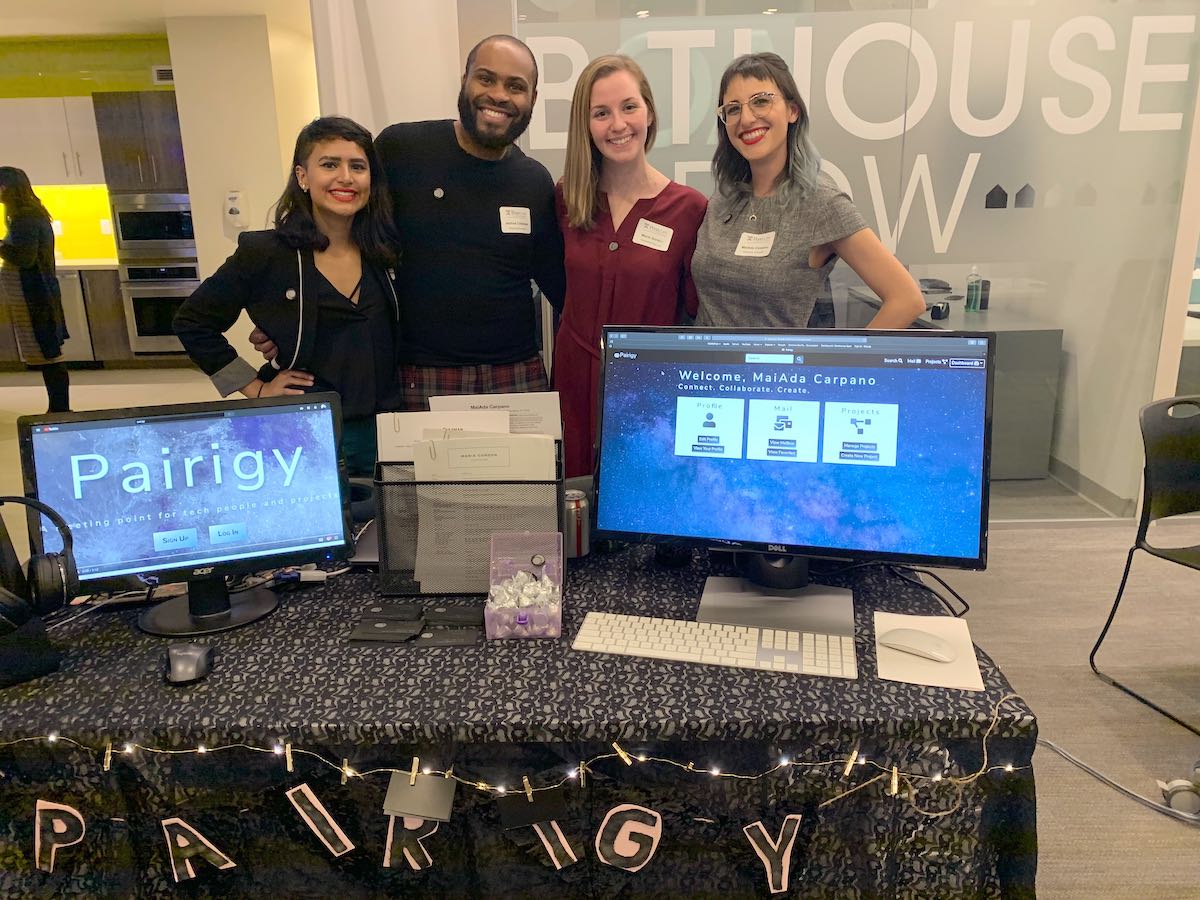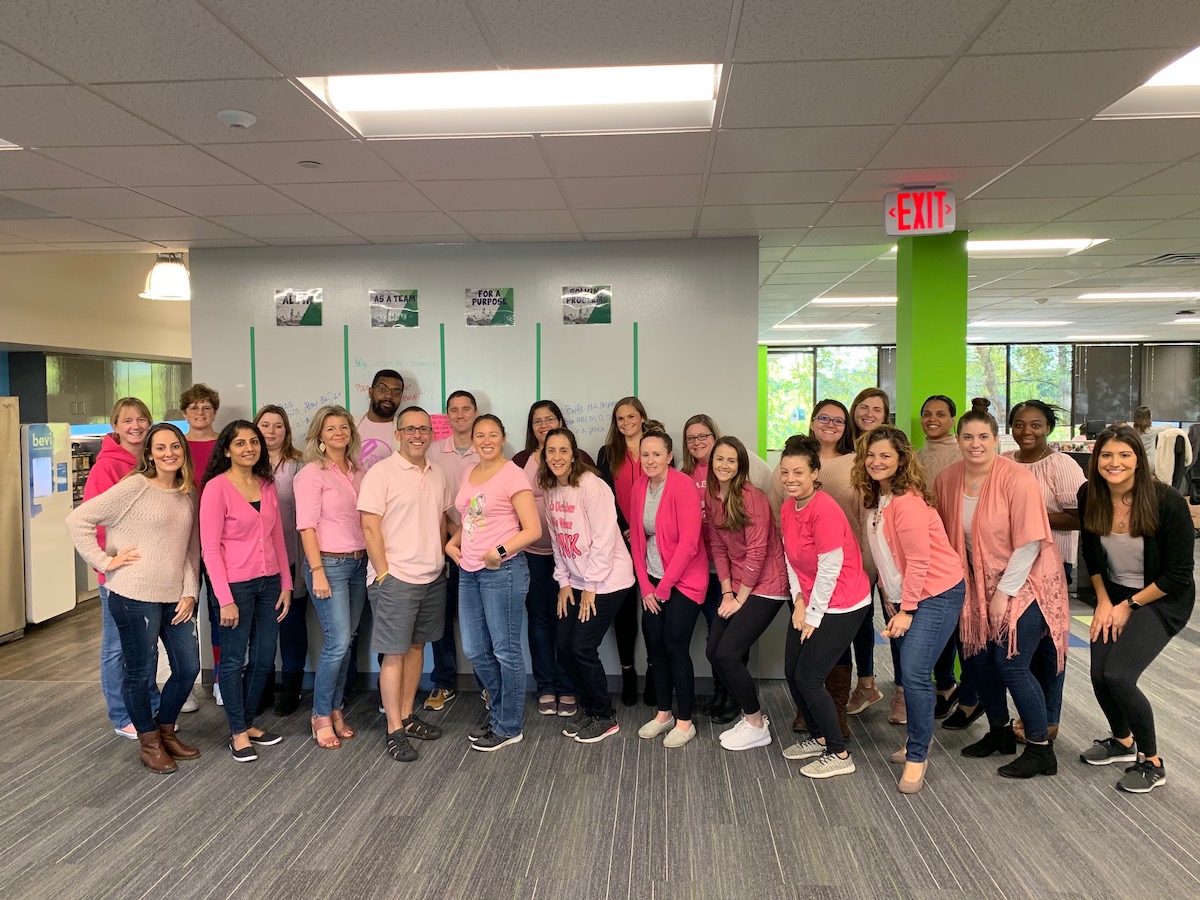MaiAda Carpano was looking for a chance at some upward mobility when she enrolled in a tech bootcamp late last year. Jenn Lazar was looking for a company that shared her values and would offer her the work-life balance she now needed as a working mom.
Both women entered the tech workforce after pivoting from different careers, and knew that it often had barriers to entry for people who weren’t male. But both women also acknowledged that the hiring practices of a company will tell you a lot it and set the tone for company culture.
During our reporting last month, where we focused on gender equity in tech, the subject of hiring was brought up again and again by sources and at a meeting we held with community stakeholders on March 3.
An equitable and diverse workforce doesn’t just feel like the “right” thing to do, it makes business sense, Tanya O’Neill, the associate director of leadership and professional development at University of Pennsylvania’s School of Medicine, said last month.
Carpano is at the start of her tech career after spending years as a middle school teacher. She graduated recently from the Penn LPS Coding Boot Camp and spent the last few months interviewing for dev jobs.
“It has been on my mind a lot how literally every single person through every interview process, and various phone screenings I had, was male,” she said.
Carpano’s cohort of bootcamp students was unusually diverse, with a majority of women or people of color — and that’s what made her experience learning so great, she said. This reporter first met Carpano at her program’s Demo Day, where she and her three project teammates presented Pairigy, a platform that matches developers looking to work together on projects.
The tech world contrasts with her experience teaching, where women make up the majority of the workforce. There’s still some devision of genders, Carpano said — many principals or school presidents are male while many teachers are female — “but you’re usually walking into a room of mostly women,” she said.
Carpano was recently offered a dev position at a new startup (the name of which she isn’t ready to announce just yet) that she decided to accept because of its mission. She said she realizes that there’ll be many times navigating her tech career when she’ll be in the minority, but that hasn’t stopped her from wanting to pursue it.
“The reality is, I might walk into a room and realize I’m the only woman, but am I going to turn down that opportunity? No,” Carpano said. “That’s the industry. I can hopefully be the first woman in the room that will bring in other women, rather than let myself be cut out.”

(L to R) Catherine Gomez, Joshua Coleman, Maria Gordon and MaiAda Carpano with their Penn LPS Coding Boot Camp Demo Day project, Pairigy. (Photo by Paige Gross)
Carpano and others at our stakeholder meeting in early March mentioned this exact point about hiring. People in charge of hiring often look to their network to fill a job. And people in your network often look a lot like you — they went to similar schools, have a similar background and are often around the same age. It’s how companies often hire the same type of person over and over again and become homogeneous.
“We all have this hidden bias, where we like to hire people like us,” said Lazar, the talent acquisition manager at Greenphire, a fintech company that handles clinical trial payment solutions.
Lazar said when she moved back to the Philly area from Texas a few years ago, she was looking for a company that would make sense for her for the long haul. She had something new in her life (kids) that meant wherever she landed needed to be supportive, flexible and have a good set of values. Greenphire offered her that.
And since she’s led hiring initiatives the last few years, she realized quickly there were things companies could do to make themselves equitable to people of all genders and backgrounds. Greenphire, which has about 200 employees, is made up of 54% women or non-male employees, and about 20% of its IT department is non-male, according to Lazar.
Companies can do these things if they put the time in. Put your people first and your companies will be successful.
While there’s always room for improvement, Lazar said the team is working toward success with a handful of changes made to its hiring procedures. First is recognizing who’s in your network and how to expand that network by going to different meetup groups, joining networking organizations and rethinking a traditional application process.
When first considering a candidate, think about how they fit in with the company’s values; Greenphire’s are working “all in, as a team, for a purpose and solving problems,” she said.
If you fit with those values, she said, that’s more important than the hard or soft skills that can be trained. Potential new hires also see and hear from a wider hiring committee — from folks in different departments and skill levels.
Second was boiling down what is absolutely necessary for a given position. Greenphire has overhauled its job descriptions to make educational requirements “preferred,” instead assessing someone’s ability or experience. A master’s degree in computer science doesn’t mean you’re more or less qualified than someone with an associate’s degree and years of experience, Lazar said.
The third part of the process is about ensuring that once a new hire comes onboard, they have an environment that supports things like family life, continued education and a clear outline of possible upward mobility. And that applies especially for women, who can get passed over for promotions or looked down upon for taking time off for child care or to attend school functions.
Greenphire has what Lazar called a career path plan, an outline for each department and role’s necessary hard and soft skills, and paths to promotion within the company. That’s extremely important, especially to people in tech who job hop faster than other industries, she said.
Ultimately, ensuring a workplace that’s open to all genders and equitable once you’re working there boils down to making sure the company has the culture to support them.
“I really want to reiterate that companies can do these things if they put the time in,” Lazar said. “Put your people first and your companies will be successful. Making everyone feel welcome and everything equitable should be important to you.”

This editorial article is a part of Technical.ly's Gender Equity in Tech Month of our editorial calendar.
Before you go...
Please consider supporting Technical.ly to keep our independent journalism strong. Unlike most business-focused media outlets, we don’t have a paywall. Instead, we count on your personal and organizational support.
Join our growing Slack community
Join 5,000 tech professionals and entrepreneurs in our community Slack today!

The person charged in the UnitedHealthcare CEO shooting had a ton of tech connections

From rejection to innovation: How I built a tool to beat AI hiring algorithms at their own game

Where are the country’s most vibrant tech and startup communities?


